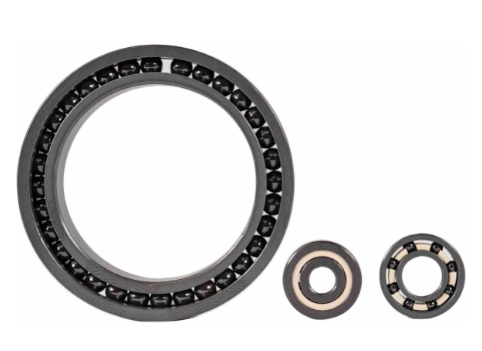Welcome to Sino Bearings web
24x7 HOTLINE:+86-28-81454188

 NEWS
NEWS
Contamination events in pharmaceutical manufacturing can be extremely costly. One such area that introduces potential contamination risk if not managed effectively, is the use of bearing lubrication in equipment. Chris Johnson from SMB Bearings explains
There’s more pressure than ever on pharmaceutical companies to meet production demand. Consequently, the global pharmaceutical market size is expected to reach $2,067.36 million by 2028, growing at a compound annual growth rate (CAGR) of 5.7% during the period from 2022 to 2028. Chris Johnson is the Managing Director at bearing lubrication specialist SMB Bearings. In this article he explains the importance of careful lubricant selection to manage contamination risks and boost drug output.
Drug shortages pose a significant threat to public health. As the global population ages and access to drugs increases, pharmaceutical companies face growing pressure to meet the production demands needed to provide critical care to patients. While it may seem like the obvious solution is to simply ramp up production, the manufacturing realities are more complex.
According to an FDA report, product or facility concerns are the leading cause of pharmaceutical manufacturing disruption, being responsible for 66% of all production disruptions. Due to these disruptions, producing more drugs would be challenging for facilities and could be an inefficient and wasteful approach to increasing output. The alternative lies with increasing the quality of each batch.
To address this growing challenge, manufacturers are turning toward more flexible factory operations to support the manufacture of a wide variety of specialised drugs. To achieve this, drug manufacturers should accelerate the adoption of digitalisation and address infrastructure upgrades to bring transformation to the entire manufacturing process. This will increase the overall quality in any given batch, thus minimising shortages. Here are three key considerations for pharmaceutical plant managers to minimise contamination risks and increase output while maintaining compliance.
Pharmaceutical quality assurance
Pharmaceutical quality assurance is one of the most fundamental aspects of the whole drug manufacturing process. This regulation is designed to ensure medicines conform to industry standards and there are no contaminants present at any stage of development.
If environmental conditions are poorly managed, this can lead to poor quality standards, regulatory violations and delayed drug approvals. This can also result in deteriorating equipment, which creates more variable product quality. In such instances, it’s not simply a compliance issue, but can lead to additional financial and environmental costs, ultimately impairing productivity.
Managing contamination
Despite evolving manufacturing techniques, safety and the control of contaminants remains of the utmost importance. One such area that introduces potential contamination risk if not managed effectively, is the use of bearing lubrication in equipment.
Effective bearing lubricant selection in pharmaceutical settings starts by considering the application of the machine. Equipment used in the production of pharmaceuticals, such as tablet packaging machines or peeler centrifuges, generally use very little lubrication or no lubrication at all. This is because contact between active pharmaceutical ingredients and products such as lubricants cannot take place.
Food grade lubricants are used for the lubrication of machinery in the pharmaceutical industry and are purpose-designed to help minimise risks. Lubricants are classified by NSF into several food-grade categories H1 and H2. H1 lubricants are food-grade lubricants used in food-processing environments where there is the possibility of incidental food contact. However, for equipment that is not situated in the production zone and does not have any direct contact with production machinery, the product or packaging — H2 lubricants will suffice.
Cleanroom applications may demand the sterilisation of tools and machine components. If lubrication is needed in these environments, extreme low volatility (low outgassing) cleanroom lubricants must be used to avoid contamination of the environment. Typically, these lubricants will not contain lithium, molybdenum, calcium, aluminium, barium, zinc or sodium.
Another consideration is whether a bearing can be used without lubricant at all. Ceramic is non-porous and as a result, it is practically frictionless. Unlike stainless steel bearings, full ceramic bearings do not suffer heat build-up within the bearing and therefore do not need lubrication to help dissipate the heat. Therefore, unlubricated full ceramic bearings do not run the risk of contaminating the product due to lubricant leakage.
Other contamination risks such as using the correct personal protective equipment, storage conditions and handling procedures should also be considered. A dedicated system to control and monitor environmental conditions, real-time energy monitoring and production correlation can be installed.
Real-time data
Human error is one of the biggest risk factors in quality control. By effectively digitalising their operations, plant managers can better adhere to regulatory requirements, promote data integrity and ensure traceability throughout the lifecycle.
Introducing a digital dashboard showing real-time data from across the manufacturing plant makes data easily accessible to operators. Through simulation, data modelling and analytics software, plant managers can make data-backed decisions relating to individual machinery or entire production lines. For example, by installing sensors on bearings used in pharmaceutical manufacturing, operators would be able to clearly see if a bearing needed to be regreased and could prevent equipment failure in the long run.
Data is also used to fact check and make informed decisions. Missing or inaccurate data can lead to non-conformance, which will ultimately result in delays and could even cease production. As plants consider revamping their physical infrastructures, simulation can allow businesses to conduct real time testing to gain insight without production disruption.
It’s clear that the pharmaceutical facilities of the future will need to be agile and flexible to face the risks that can impact production capabilities. By choosing the correct bearing lubricant for the desired pharmaceutical operating environment, plant managers can dramatically reduce contamination risks in this area.